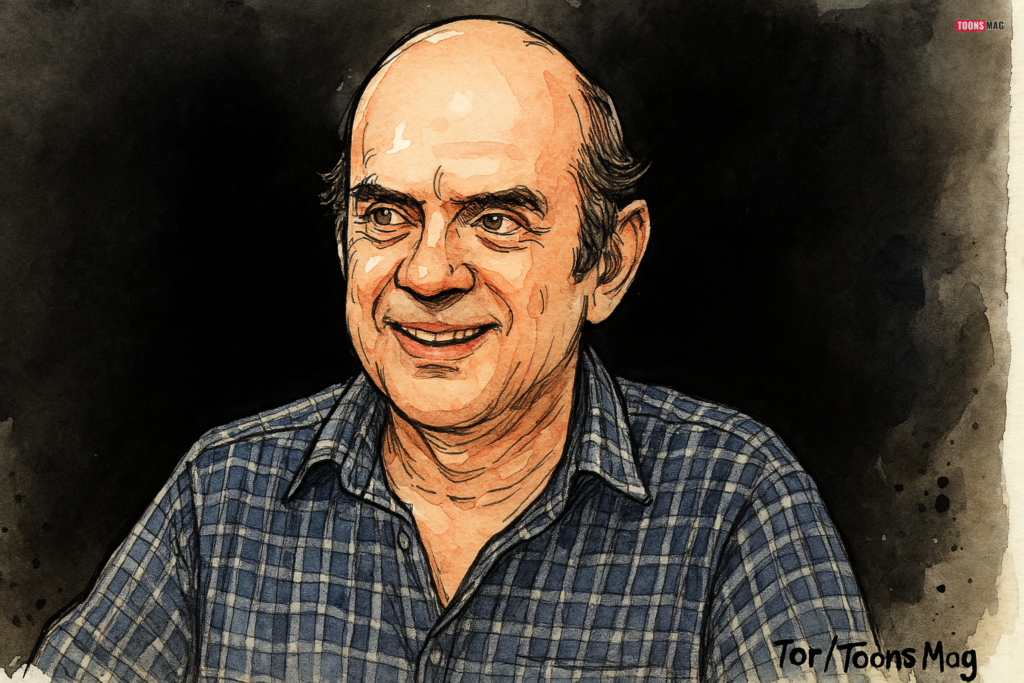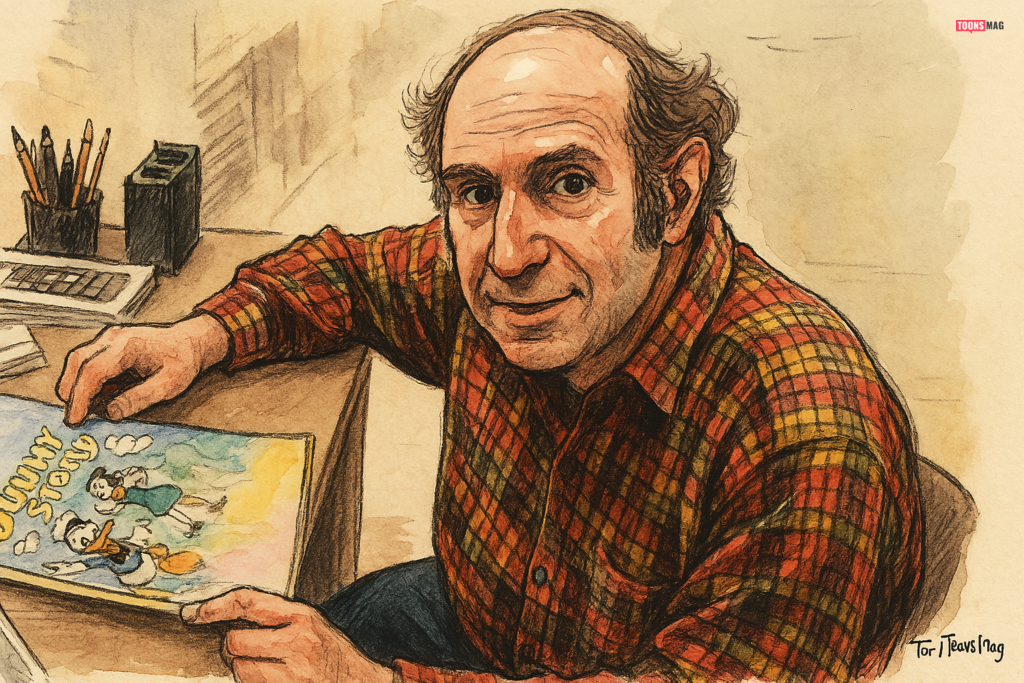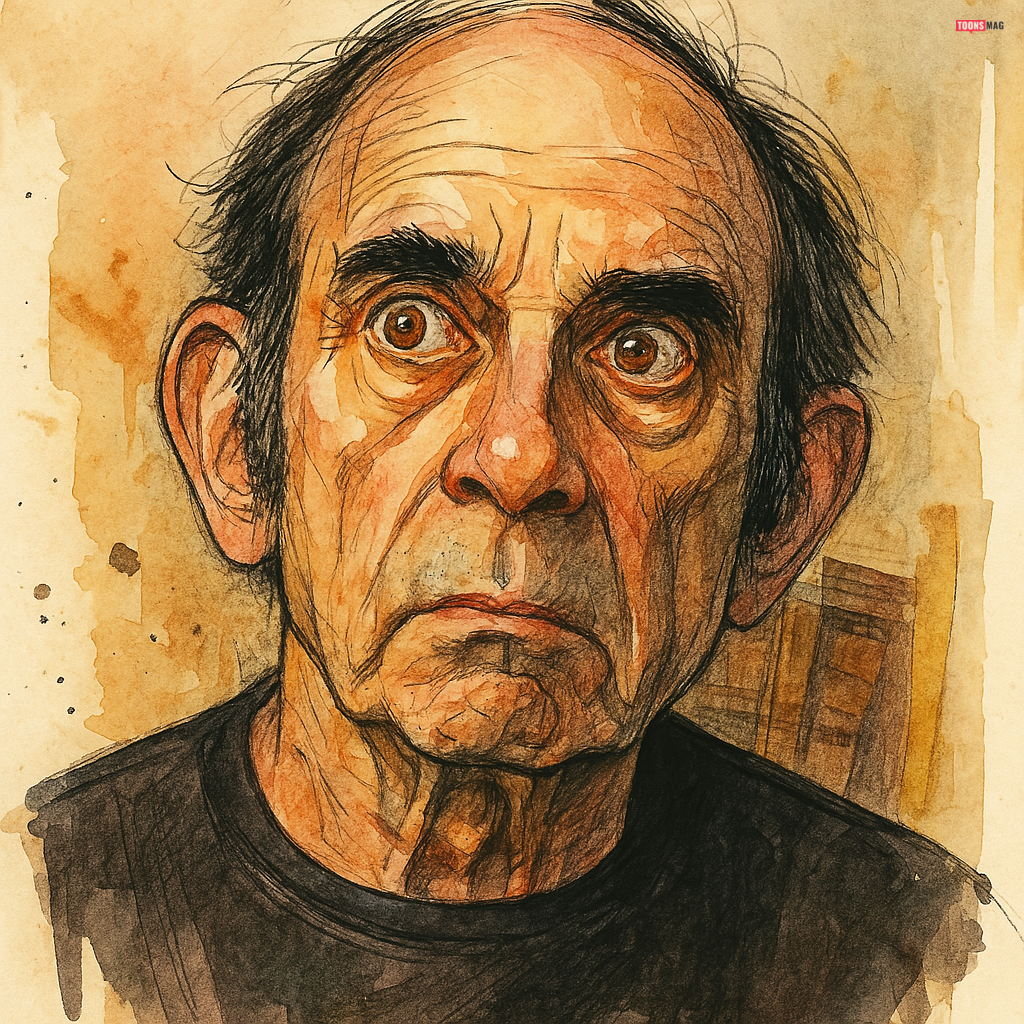Harvey Lawrence Pekar aka Harvey Pekar (October 8, 1939 – July 12, 2010) was an American underground comic book writer, jazz critic, and media personality, best known for his groundbreaking autobiographical comic book series American Splendor. Over the course of several decades, Pekar chronicled the minutiae of daily life in his hometown of Cleveland, Ohio, with a unique blend of honesty, wit, and unvarnished realism. Through his unsentimental depiction of the working-class experience, he emerged as a voice for ordinary people and played a vital role in legitimizing comics as a medium of literary expression.
Harvey Pekar
| Name | Harvey Lawrence Pekar |
|---|---|
| Born | October 8, 1939, Cleveland, Ohio, U.S. |
| Died | July 12, 2010 (aged 70), Cleveland Heights, Ohio |
| Occupation | Comic book writer, music critic, media personality |
| Education | Case Western Reserve University (dropped out) |
| Genres | Autobiographical comics, underground, alternative |
| Notable works | American Splendor, Our Cancer Year |
| Spouses | Karen Delaney (1960–1972), Helen Lark Hall (1977–1981), Joyce Brabner (1984–2010) |
| Children | Foster daughter: Danielle Batone |
| Awards | Inkpot Award (1986), American Book Award (1987), Harvey Award (1995), Eisner Award Hall of Fame (2011) |
| Years Active | 1959–2010 |
| Burial Place | Lake View Cemetery, Cleveland, Ohio |
Early Life and Education
Born in Cleveland, Ohio, to Jewish immigrants from Białystok, Poland, Harvey Pekar grew up in a working-class neighborhood on Kinsman Avenue. His father, Saul, was a Talmudic scholar who operated a modest grocery store that doubled as a hub for community conversation and cultural exchange. The Pekar family lived above the store, embodying the immigrant experience of perseverance and adaptation.
Although Pekar later described a distant relationship with his parents—citing a generational and ideological gap—he often reflected on their unwavering love for each other, which left a lasting impression on him. His first language was Yiddish, and he maintained fluency into adulthood, which helped to shape his cultural identity and literary sensibilities. From an early age, he was captivated by novels, particularly Russian literature, and this intellectual curiosity formed the bedrock of his storytelling.

During his formative years, the racial makeup of his neighborhood shifted dramatically, becoming predominantly African American by the 1940s. As one of the last remaining white children, Pekar was often bullied and ostracized, experiences that instilled in him a deep sense of otherness and emotional resilience. These early experiences with alienation, social change, and marginalization would later become recurring themes in his autobiographical writing. He found refuge in books and jazz records, developing a voracious appetite for knowledge and a lifelong love of music and language.
Pekar graduated from Shaker Heights High School in 1957, where he was known as a loner with a sharp intellect. He briefly served in the United States Navy, an experience that left him further disillusioned with institutional structures. After his discharge, he enrolled at Case Western Reserve University, but he dropped out within a year, finding academia too rigid and uninspiring for his independent mind. Over the next few years, he held a variety of odd jobs, including busboy, dishwasher, and telemarketer, before securing a position as a file clerk at the Cleveland Veterans Administration hospital in 1965.
He remained in that role for more than three decades, refusing promotions so he could maintain time and mental space for his creative pursuits. Remarkably, Pekar continued working at the VA hospital even after gaining widespread literary acclaim, valuing the stability and routine the job offered in contrast to the unpredictable world of publishing.
Career and American Splendor
Pekar’s fascination with jazz led him to develop a friendship with underground comics legend Robert Crumb. Their mutual passion for obscure and vintage jazz records sparked a bond that extended beyond music, laying the groundwork for a creative partnership that would redefine the scope and boundaries of comics. Encouraged by Crumb—who had already made his mark as a pioneering underground cartoonist—Pekar began scripting comic stories that drew deeply from his own life.
Rather than inventing fantastical tales or superhero sagas, he focused on raw, autobiographical vignettes about the everyday: the monotony of work, the awkwardness of social encounters, the quiet victories and setbacks of ordinary existence. His themes—rooted in isolation, frustration, working-class identity, and perseverance—resonated with a growing audience craving authenticity in comics.
In 1976, Pekar self-published the first issue of American Splendor, enlisting the illustrative talents of Crumb, along with Cleveland-based artists Gary Dumm and Greg Budgett. These collaborators brought Pekar’s slice-of-life scripts to vivid life, transforming seemingly mundane moments into compelling narratives. With its unpolished aesthetic and brutally honest storytelling, American Splendor quickly distinguished itself from mainstream titles, becoming a staple of the burgeoning alternative comics movement. The series was published sporadically over several decades, each issue capturing an evolving portrait of urban life, cultural ennui, and personal reflection.

American Splendor was lauded for its emotional depth, observational acumen, and unsentimental approach to storytelling. Pekar turned everyday minutiae—conversations with coworkers, walks through Cleveland, trips to the record store—into profound meditations on life’s fragility and absurdity. His unique voice and journalistic eye established a new genre within comics: graphic memoir. The series also became a platform for artistic collaboration, featuring work by luminaries like Spain Rodriguez, Alison Bechdel, Frank Stack, Chester Brown, Joe Sacco, Dean Haspiel, and Ed Piskor, among others.
These partnerships enriched the aesthetic diversity of the series, ensuring that each installment offered both visual and narrative experimentation. Through American Splendor, Pekar proved that comics could be as introspective, philosophical, and emotionally complex as any other form of literature.
Film and Later Works
In 2003, American Splendor was adapted into a feature film starring Paul Giamatti as Pekar. The film utilized a groundbreaking meta-narrative structure, combining dramatized scenes, archival footage, and animated sequences. Pekar himself appeared in several interludes, offering commentary on the nature of storytelling and identity. The film received critical acclaim for its innovative form and emotional depth, winning the Grand Jury Prize at the Sundance Film Festival. It was also nominated for an Academy Award for Best Adapted Screenplay and earned numerous accolades from film critics associations. This cinematic adaptation brought Pekar’s introspective and uniquely mundane worldview to a broader, global audience, further cementing his legacy as a transformative figure in the world of comics and narrative nonfiction.

In addition to American Splendor, Pekar was a prolific author and collaborator, contributing to a wide range of graphic novels, biographies, and historical adaptations. His 1994 graphic novel Our Cancer Year, co-written with his wife Joyce Brabner, chronicled his intense and personal battle with lymphoma and won the Harvey Award for Best Graphic Album. The book is often cited as a powerful example of graphic medicine—a genre that combines medical storytelling with personal narrative.
Pekar continued to push thematic boundaries with works such as The Quitter (2005), a coming-of-age memoir about his struggles with self-doubt and fear of failure; Ego & Hubris: The Michael Malice Story (2006), a psychological portrait of an eccentric editor; The Beats: A Graphic History (2009), an illustrated chronicle of the Beat Generation; and Studs Terkel’s Working: A Graphic Adaptation (2009), which brought the voices of everyday laborers to life through comics. His final works, published posthumously, included Not the Israel My Parents Promised Me (2012), which examined the complexities of Jewish identity and Zionism, and Harvey Pekar’s Cleveland (2012), a love letter to the city he called home, interweaving personal memoir with local history and sociocultural critique.
Critical Writing and Media Appearances
A self-taught intellectual, Pekar was also a prolific jazz critic. Beginning in 1959, he contributed hundreds of essays and liner notes to publications such as DownBeat, JazzTimes, and The Village Voice. His writing demonstrated a deep understanding of music theory and history, often highlighting underappreciated or obscure jazz musicians.
Pekar also became a fixture on Late Night with David Letterman during the 1980s. His confrontational, anti-corporate stance—particularly his vocal criticisms of NBC’s parent company General Electric—made his appearances both legendary and controversial. Although banned temporarily from the show after a heated exchange, Pekar returned for final appearances in the early 1990s. He also appeared in documentaries such as Vinyl and made a cameo on Anthony Bourdain: No Reservations.
Personal Life and Relationships
Pekar was married three times. His first two marriages ended in divorce, with his second wife, Helen Lark Hall, being fictionalized in early American Splendor stories. In 1984, he married writer and activist Joyce Brabner. The couple collaborated creatively and became foster parents to a young girl named Danielle Batone. Their domestic life and parenting were also documented in later American Splendor issues.
Pekar passed away on July 12, 2010, at age 70. An autopsy revealed an accidental overdose of antidepressants. His headstone in Lake View Cemetery features the epitaph: “Life is about women, gigs, an’ bein’ creative.”
Legacy and Influence
Harvey Pekar is widely regarded as a trailblazer in the realm of autobiographical comics. Through American Splendor, he brought working-class sensibilities, intellectual rigor, and raw emotional honesty to a medium traditionally associated with fantasy and escapism. His fearless storytelling turned the mundane into the profound, offering readers a candid window into the unglamorous truths of everyday life. Pekar’s narrative style was deeply rooted in realism, often exploring themes of economic hardship, social alienation, chronic illness, and the relentless pursuit of meaning in an indifferent world. His meticulous attention to detail and unflinching self-scrutiny created an intimate bond with readers, making his voice one of the most distinctive in modern comics.
He influenced a generation of cartoonists and writers, including the likes of Alison Bechdel, Joe Sacco, and Chris Ware, who drew inspiration from Pekar’s honesty and his ability to elevate autobiography into literary art. Many of today’s most acclaimed graphic novelists credit Pekar with opening the door to a more personal, introspective form of comics storytelling. His collaborations with a diverse group of illustrators also helped define the visual landscape of alternative comics, bringing a multiplicity of styles and interpretations to his narrative world.

In addition to his literary and cultural influence, Pekar is remembered for humanizing comics and demonstrating their power as vehicles for personal narrative, political commentary, and social realism. He showed that comics could confront real issues such as race, class, illness, and emotional struggle with integrity and depth. His commitment to truth-telling and artistic autonomy set a new standard for what comics could achieve.
In 2012, a life-sized statue of Pekar was unveiled at the Cleveland Heights-University Heights Public Library, a place he frequently visited and often wrote about in his comics. The statue, embedded in the floor as a “walk-through” installation, serves not only as a memorial but as an invitation to explore his work and worldview. In 2015, a public space in Cleveland Heights was renamed Harvey Pekar Park, honoring his impact on the city and its cultural landscape. These tributes symbolize his lasting legacy, not only as a writer but as a cherished cultural figure who gave voice to the overlooked and undervalued aspects of American life.
Awards and Recognition
- Inkpot Award (1986)
- American Book Award (1987) for American Splendor: The Life and Times of Harvey Pekar
- Harvey Award for Best Graphic Album (1995) for Our Cancer Year
- PRNDI Commentary/Essay Award (2000)
- Edward R. Murrow Award for Best Writing (2001)
- Eisner Award Hall of Fame (2011)
Selected Bibliography
- American Splendor (1976–2008)
- Our Cancer Year (1994)
- The Quitter (2005)
- Ego & Hubris: The Michael Malice Story (2006)
- The Beats: A Graphic History (2009)
- Not the Israel My Parents Promised Me (2012)
- Harvey Pekar’s Cleveland (2012)
Harvey Pekar’s voice was unmistakable—sardonic, humane, introspective—and his contributions to comics and American literature continue to resonate. Through the lens of his life, Pekar offered readers a mirror to their own ordinary struggles, elevating them into extraordinary reflections on what it means to be human.



